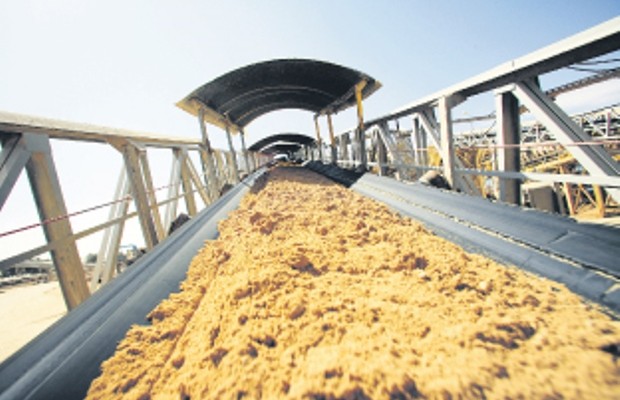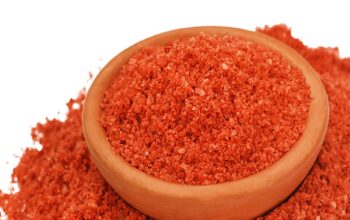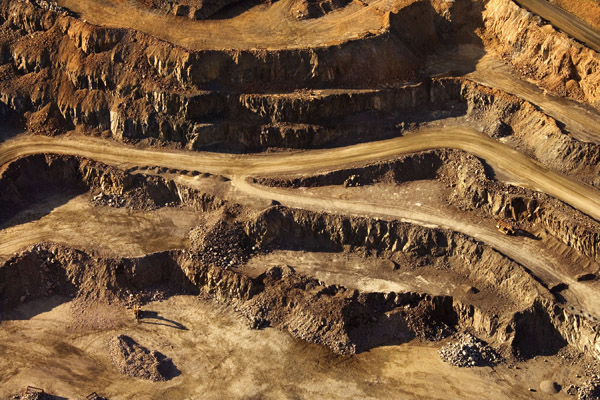The agriculture sector is an interesting option for potential investors and should be a part of a well-diversified portfolio. One part of investing in agriculture is investing in fertilizers and this means in companies involved in the mining and production of potash and phosphate, such as Nutrien, Mosaic Company or Vale. When analyzing such companies, the first thing a prospective investor needs to look at is the outlook for the product – and here, we will focus on phosphate. This substance is critical for all living organisms because its primary function is to support strong cell development and water retention. Because of its essential properties and since there is no known substitute for it, phosphate can be found in fertilizer products all over the world as a way to aid plant growth – in fact, as much as 90% of all phosphate produced is applied as a fertilizer to crops. Phosphate is also used as a supplement in animal feed, as a food preservative and for several other chemical purposes.
Generally speaking, producers expect that global population growth and the growth of the middle class will significantly increase demand for food and, consequently, demand for phosphate fertilizers. For that reason, some believe phosphate investing is compelling, but looking at the issue more closely, we find that the devil is in the detail: although demand is expected to grow, some upcoming projects could disrupt the market. For example, future supply of phosphate to the global markets could be considerably affected by the Saudi Arabia’s Ma’aden Wa’ad al Shamal Phosphate Company, which is expected to produce 16 million tons per year when full production occurs, and also by Morocco’s Jorf Lasfar Phosphate Hub, which could increase its production from the current 3 million tons to 13 million tons.
China was the top phosphate rock producer in 2019 by a wide margin, putting out 110 million MT, while Morocco ranked second with the production of 36 million MT. Phosphate-mining projects are present in a large number of other countries as well, including Russia, Israel, South Africa, Tunisia, Jordan, Brazil, Syria, Senegal and Togo. When it comes to phosphate resources, Morocco is home to the world’s largest phosphate deposits, controlling about 70% of global reserves. The United States, which also holds large phosphate deposits, particularly in Florida, Idaho, Utah and North Carolina, produced 23 million MT of phosphate rock in 2019.
In terms of demand, the need for phosphate has been slowly increasing over the last few years – from 40.6 million MT in 2012 and is projected to reach 50.5 million MT by 2022. With the world’s growing population and increasing need for crop nutrients, the demand for phosphate should also keep steadily growing well into the future. Hence, in the coming years, the phosphate industry will need to focus on mining expansion opportunities and increase exploration activities to meet the growing demand and future growth forecasted for the sector. Having said that, while the future of phosphate generally looks bright, prospective investors are advised to take advantage of short-term trends and seasonality, which is always strong in the fertilizer sector.
There are always opportunities for investors to get into the space, though phosphate investing is a little trickier than investing in more mainstream commodities like silver and gold. Experts advise investors to buy shares when phosphate prices are stable at a lower level and stocks cheap with mixed profitability – under such circumstances, it might be smart to invest in a company, ideally a lowest-cost phosphate producer, that has a price to earnings ratio around 10 and a strong dividend. Such a strategy will limit the investors’ downside while giving them nice upside. Unfortunately, the price to earnings ratio is around 30 for Mosaic, and Nutrien, and negative for Intrepid Potash. To cut the risk of concentrated stock positions, investors can also invest in phosphate by buying shares of an exchange-traded fund (such as Global X Fertilizers/Potash ETF) that includes exposure to phosphate. Still, most market participants choose to invest directly in phosphate-focused companies.
Puneet Parikh (New Delhi, India)




